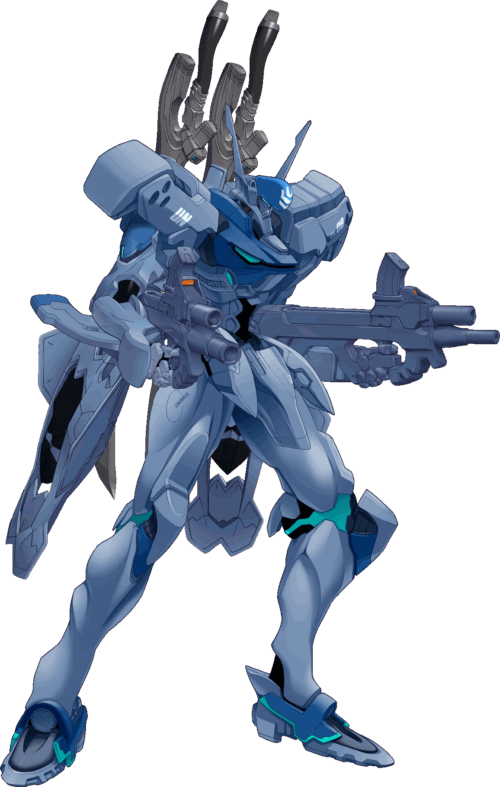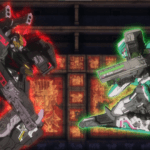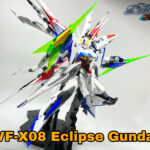
Mecha Profile: Type-94 Shiranui – Muv-Luv Alternative
Pride and Honor. Protect the Shogun, protect the people, and protect the country. That is the code of Japanese Bushido. In the world where Japan stand at the frontline of the alien invasion, their courage and skills are pushed to the limit. To create a sword that is unique and carry the burning spirit of the Empire of Japan, they have joined their hands and minds together to create Japan’s and the world’s first 3rd-Generation TSF: the Type-94 Shiranui.

I. Development History:
– When the threat of the BETA loomed beyond the horizon, Imperial Japan quickly ordered TSFs from the U.S, which was the F-4 Phantom. However, The U.S was prioritizing the current frontline at the time which was the Eurasia continent, hence there were many supply issues with Japan’s order. Even though the U.S later shared development technology and piloting knowledge with Japan, they knew they could not rely on them for the coming war.
– The Imperial Japanese Force and the Ministry of Defense wholeheartedly believed that a domestically developed TSF is the way to go if Japan want to have a future. In 1983, the government then poured its resources into the “Youkou Program” – a collaboration project between Japan’s manufacturers Fugaku, Kawazaki and Mitsuhishi. The three companies have already gained experienced and knowledge from the licensed production of the F-4J Gekishin and the F-4J Kai Zuikaku.
– However, soon after development started, the companies encountered a serious issue: the specs required by the Ministry of Defense for the new TSF were too high. Due to the future-proof requirement that the next mainline craft would not become obsolete within 10 years of its deployment, as well as having better performance than anything that is currently deployed on the battlefield. The specs of the Youkou Program are obviously based on America’s ATSF Program, but imbued with Japan’s own unique operational concepts as well.
– Due to the extremely high demands, the project slowly shifted into a research and development program for a variety of innovative fundamental technology. Japan even imported the F-15C Eagles to study and absorb development techniques. The Program’s Agency even exchanged technology with Europe, as they were also focusing on close-combat development. The Project steadily make progress until February 1994, when the first unit of the mass-produced Type-94 Shiranui was transferred to the Imperial Japanese Army Combat Technology Research Unit. This not marked the first TSF to be fully domestically produced by Japan, but also the world’s first 3rd-Generation TSF on the field.
– The Shiranui’s development doesn’t just stop there. In 2000, the XFJ Project which aimed to drastically improve the Shiranui was approved as part of a larger international TSF-development project: Project Prominence. The result of the Project is the Shiranui 2nd, which is a massive upgrade from the original.
– When the threat of the BETA loomed beyond the horizon, Imperial Japan quickly ordered TSFs from the U.S, which was the F-4 Phantom. However, The U.S was prioritizing the current frontline at the time which was the Eurasia continent, hence there were many supply issues with Japan’s order. Even though the U.S later shared development technology and piloting knowledge with Japan, they knew they could not rely on them for the coming war.
– The Imperial Japanese Force and the Ministry of Defense wholeheartedly believed that a domestically developed TSF is the way to go if Japan want to have a future. In 1983, the government then poured its resources into the “Youkou Program” – a collaboration project between Japan’s manufacturers Fugaku, Kawazaki and Mitsuhishi. The three companies have already gained experienced and knowledge from the licensed production of the F-4J Gekishin and the F-4J Kai Zuikaku.
– However, soon after development started, the companies encountered a serious issue: the specs required by the Ministry of Defense for the new TSF were too high. Due to the future-proof requirement that the next mainline craft would not become obsolete within 10 years of its deployment, as well as having better performance than anything that is currently deployed on the battlefield. The specs of the Youkou Program are obviously based on America’s ATSF Program, but imbued with Japan’s own unique operational concepts as well.
– Due to the extremely high demands, the project slowly shifted into a research and development program for a variety of innovative fundamental technology. Japan even imported the F-15C Eagles to study and absorb development techniques. The Program’s Agency even exchanged technology with Europe, as they were also focusing on close-combat development. The Project steadily make progress until February 1994, when the first unit of the mass-produced Type-94 Shiranui was transferred to the Imperial Japanese Army Combat Technology Research Unit. This not marked the first TSF to be fully domestically produced by Japan, but also the world’s first 3rd-Generation TSF on the field.
– The Shiranui’s development doesn’t just stop there. In 2000, the XFJ Project which aimed to drastically improve the Shiranui was approved as part of a larger international TSF-development project: Project Prominence. The result of the Project is the Shiranui 2nd, which is a massive upgrade from the original.

II. Technical Specs & Armaments:
– The Type-94 Shiranui stands at 19.7-meter tall, utilizing 2 FE108-FHI-220 Jump Units manufactured by Fugaku. Unlike other TSF where they are usually manufactured by one company, the Shiranui is a joint-product by Japan’s top manufacturer: Fugaku, Kawazaki and Mitsuhishi. Instead of competing with each other, the staff from three company worked together and incorporated a Japanese essence into America’s TSF technology, which they gained from the Akebono Program and by studying US’ TSF.
– The Shiranui possesses many features such as: a light-weight armor that can withstand 10 seconds of laser-class fire, high mobility and maneuverability by the use of a new OS and avionics, Operation By Light system, efficient fuel consumption and a strengthened Tactical Data Link connection between crafts. These specifications are even beyond state-of-the-art American TSF at the time.
– As Japan’s combat doctrine focus on close-quarter dogfight and melee, the Shiranui (as well as previous Japan TSF) is tuned for close-combat. The main manipulators are strengthened to be able to swing the PB-Blade efficiently, as well as a special type of Mount Pylon to hold the blade. The Shiranui also utilizes the sub-arm on the Mount Pylon for the auto-reloading mechanism on Assault Cannons. The spare magazines for the Assault Cannons are stored on the waist armor and can be replaced automatically without needing the pilot’s attention.
– The Type-94 typically use the Japanese issued Type-74 PB Blade, strong enough to cut through super-carbon as well as a Grappler-class forearm. The Blade’s center of gravity is located near its hilt to allow for better control and faster strikes during combat. This is based on Japanese’s Kendo philosophy. Another melee weapon that it uses is the Type-65 PB Knife stored on the forearms. The rapid deployment of the weapon allow the TSF to grab the knife in less than 3 seconds.
– For Assault Cannon, the Japanese TSF use the Type-87 Assault Cannon with an RG-36 36mm chaingun and a detachable GG-120 120mm cannon. The 36mm magazine hold 2000 rounds and the 120mm magazine hold 6. The weapon is very similar to the P90 in real life. For Impact Guard and Rush Guard, they can use a variant of the Type-87 which is the Support Assault Cannon. It switches out the 120mm cannon for a longer barrel to improve firepower and precision. The extra barrel resemble the FAMAS F1.
– In addition, the Shiranui can also be equipped with various equipment like the Type-92 Multipurpose Supplemental Armor – which is a close-combat shield – or the Type-92 Autonomous Multi-Purpose Missile System, which is mounted on the shoulder block.
III. Variation:
The mass-produced version of the Shiranui doesn’t see much variation aside from difference paint. After the government wanted to upgrade the Shiranui, an improved version were made. After that, the Shiranui evolved into a completely different craft, which we will cover in another Mecha Profile.
– Shiranui UN Color: After Japan took over Alternative IV, the government provided the United Nation base at Yokohama with several squadrons of Shiranuis painted in UN Blue.
– Shiranui IJA color: Standard IJA dark gray color with the country’s flag on the shoulder, used by IJMDF and IJA.
– Shiranui Fuji Training Corp: Shiranui painted in Russian camo. These units belong to the Fuji Instructor Group in charge of training new TSF pilot for the Empire. They act as Aggressor units and paint their unit in Russian camo to distinguish them from the regular units.
– Shiranui Type-1C: Developed in 1998, the Type-1C used an enlarged power generator and a more powerful Jump Unit – the FE108-FHI-225 used on the Takemikazuchi type-00F. The enlarged parts along with a mishmash of different TSF parts caused the unit to suffer from overscope only a handful were produced for elite pilots that can handle this unstable TSF. However, many lessons and experience were gained from this unit.
– Shiranui IJA color: Standard IJA dark gray color with the country’s flag on the shoulder, used by IJMDF and IJA.
– Shiranui Fuji Training Corp: Shiranui painted in Russian camo. These units belong to the Fuji Instructor Group in charge of training new TSF pilot for the Empire. They act as Aggressor units and paint their unit in Russian camo to distinguish them from the regular units.
– Shiranui Type-1C: Developed in 1998, the Type-1C used an enlarged power generator and a more powerful Jump Unit – the FE108-FHI-225 used on the Takemikazuchi type-00F. The enlarged parts along with a mishmash of different TSF parts caused the unit to suffer from overscope only a handful were produced for elite pilots that can handle this unstable TSF. However, many lessons and experience were gained from this unit.
IV. Trivia:
– The Shiranui’s name was inspired by a World War II Kagerou-class Destroyer, the Shiranui.
– The Shiranui is the only TSF to store its spare magazine on its skirt armor.
– The Shiranui is inspired by Masami Obari’s design aesthetic – with its slim waist and enlarged shoulder armor. Obari-sensei is an influential figure in mecha designing and animating.
– The Shiranui is said to reference the Mitsubishi F-2.
V. Gallery:
– The Shiranui’s name was inspired by a World War II Kagerou-class Destroyer, the Shiranui.
– The Shiranui is the only TSF to store its spare magazine on its skirt armor.
– The Shiranui is inspired by Masami Obari’s design aesthetic – with its slim waist and enlarged shoulder armor. Obari-sensei is an influential figure in mecha designing and animating.
– The Shiranui is said to reference the Mitsubishi F-2.
V. Gallery:















Mecha Profile: Gundam ZZ – ZZ Gundam
Power overwhelming! One of the main Gundam with the highest firepower pre CCA. The ZZ Gundam is an all-in-one combiner that was pivotal in the war against the Neo Zeon.
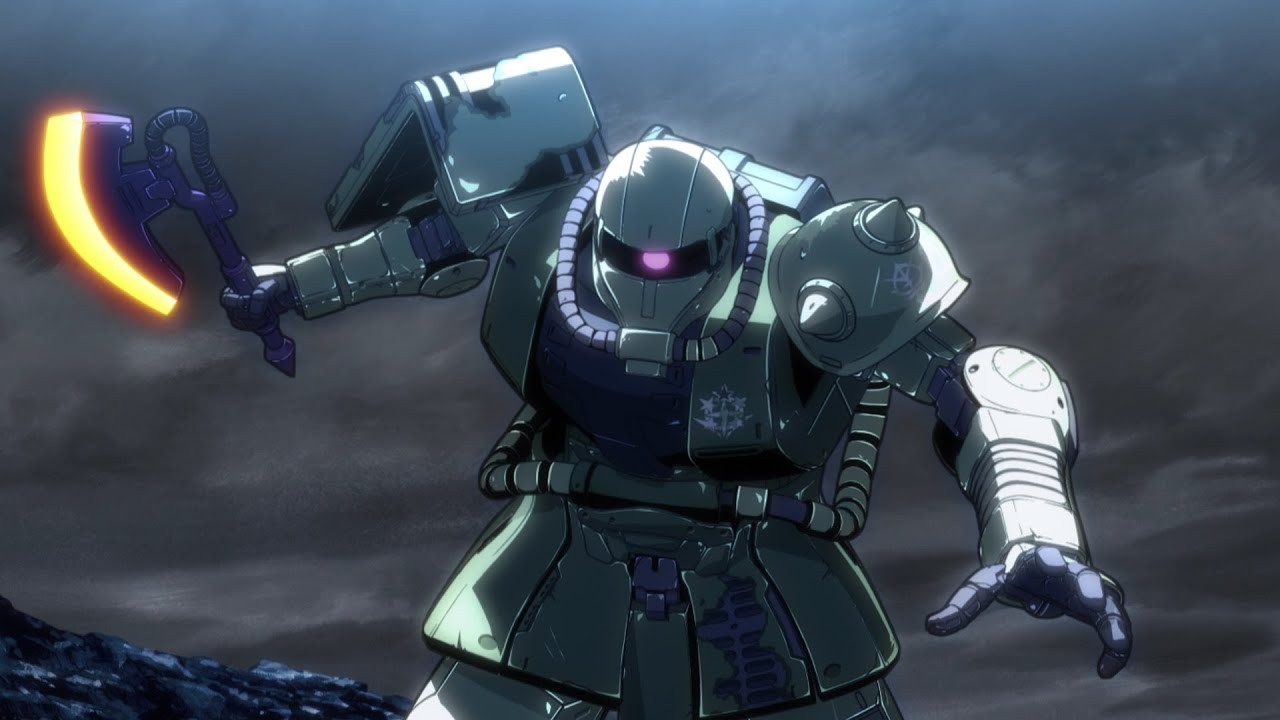
Mecha Profile: Gundam 0079 – MS-06 Zaku II
The backbone of the Principality of Zeon in the One Year War. The Zaku is not a super prototype, but its reliable performance has brought Zeon many victories – especially when Char Aznable pilot it.
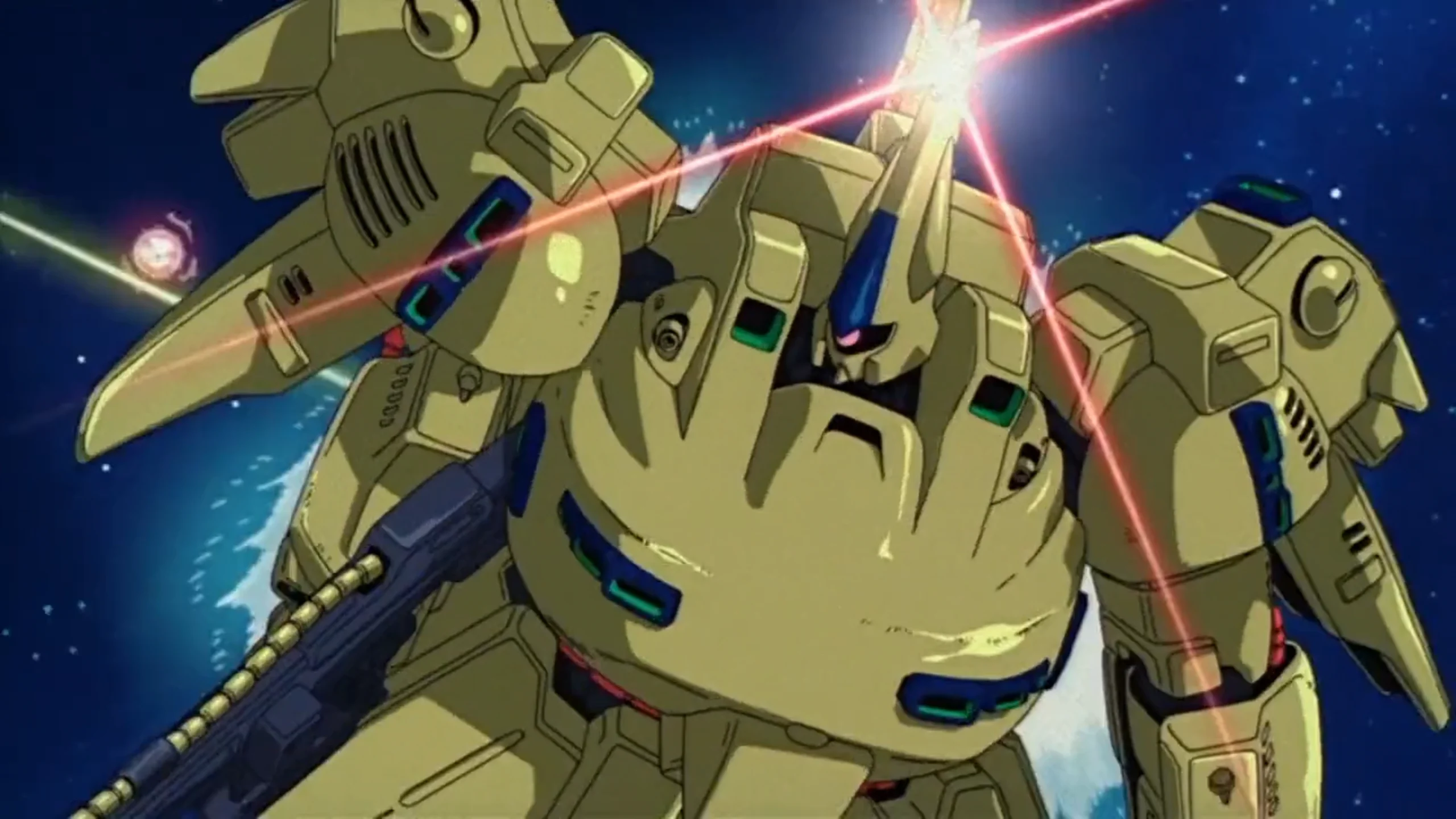
Mecha Profile: MS Gundam Zeta – PMX-003 The O
One of the most chonky bois to ever appear on screen. Piloted by the nefarious Scirocco, The-O is an impressive MS that is more agile than it looks.
